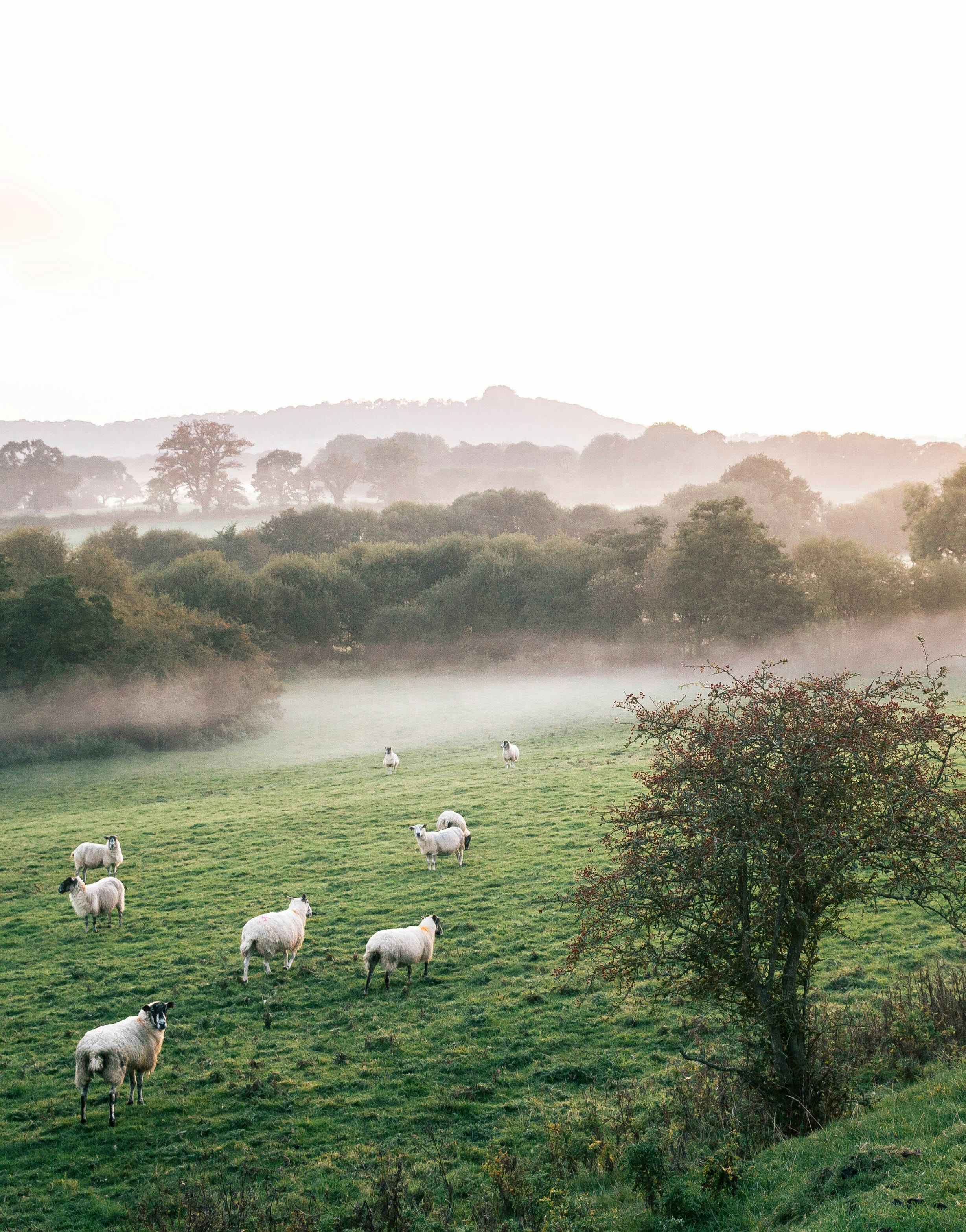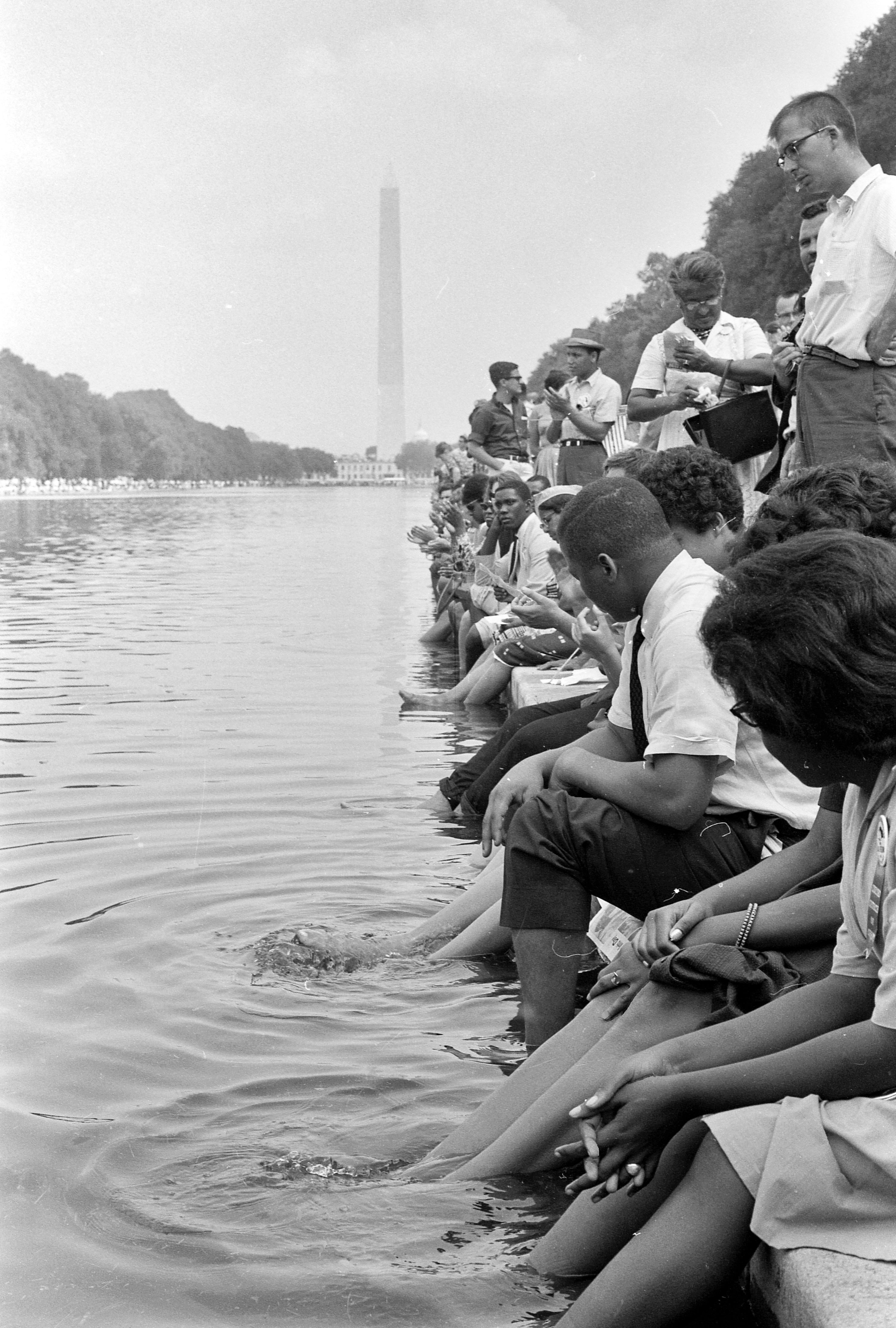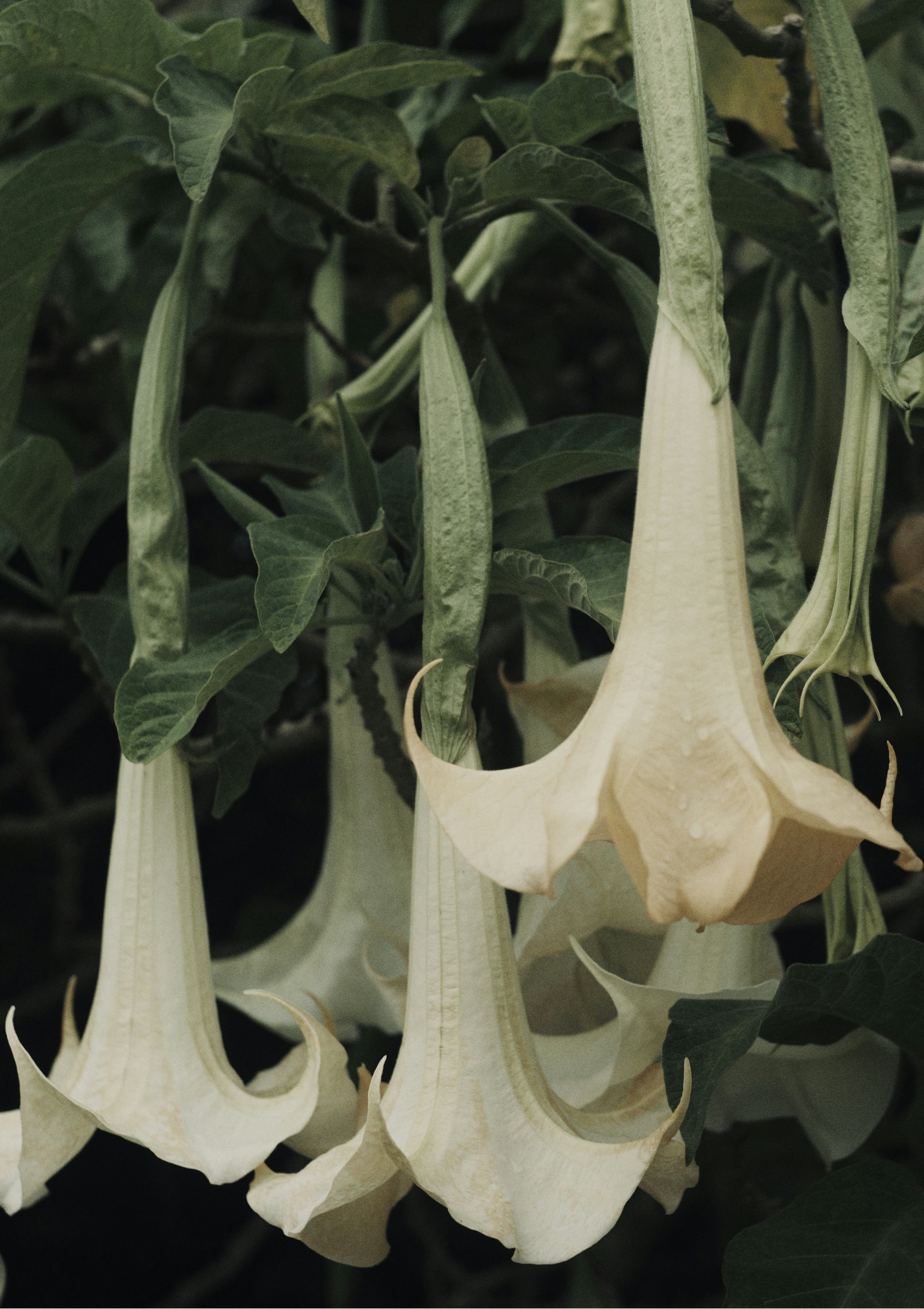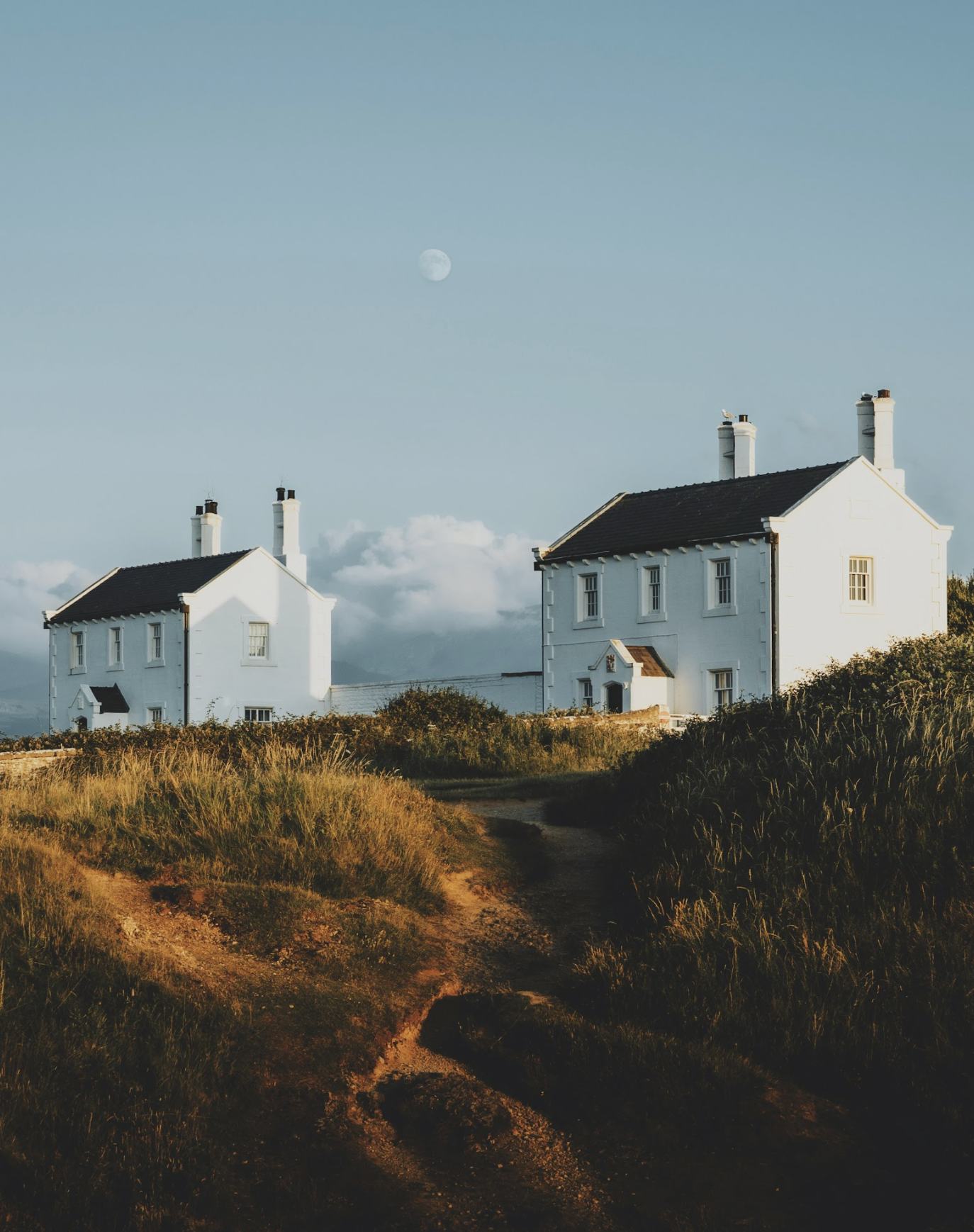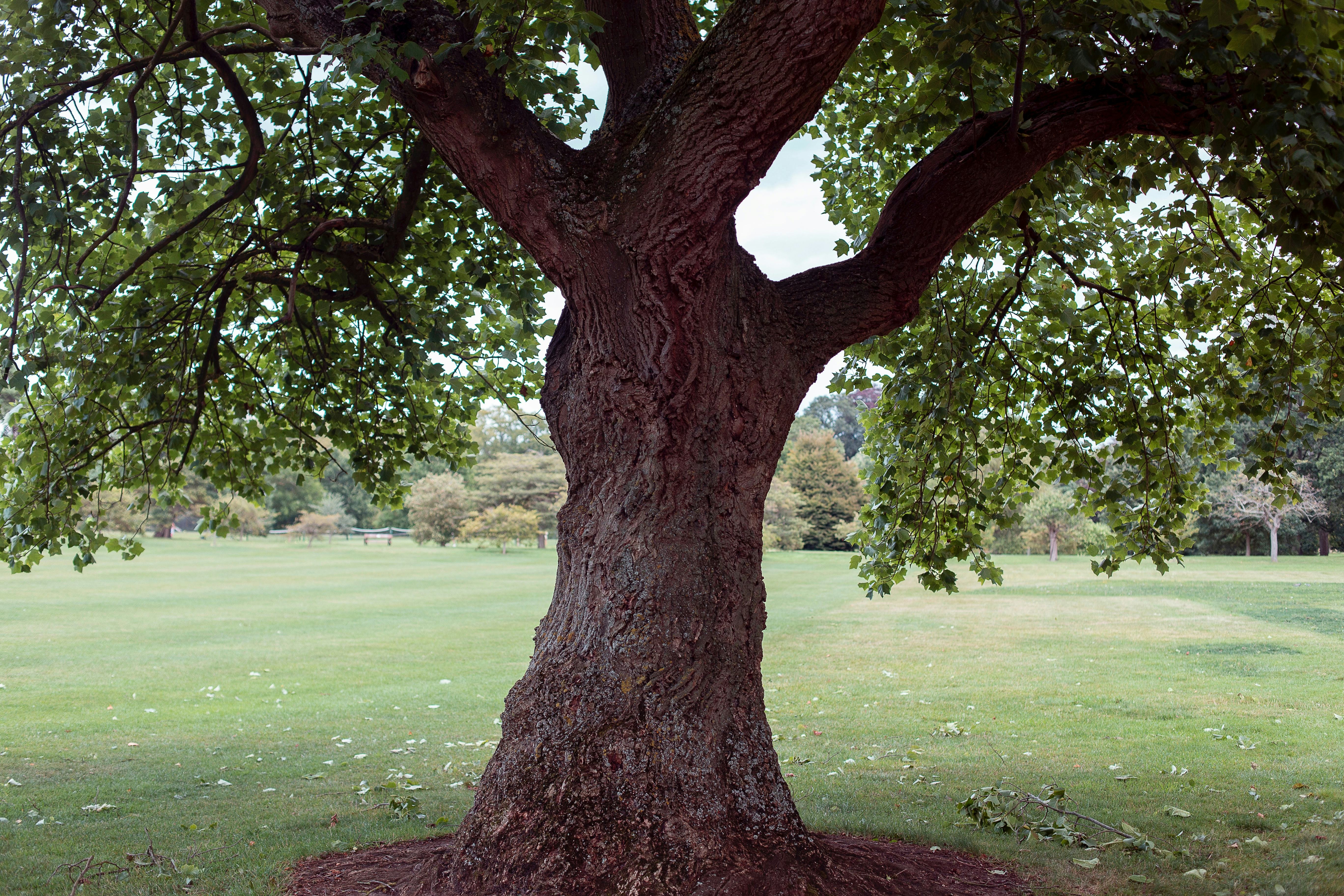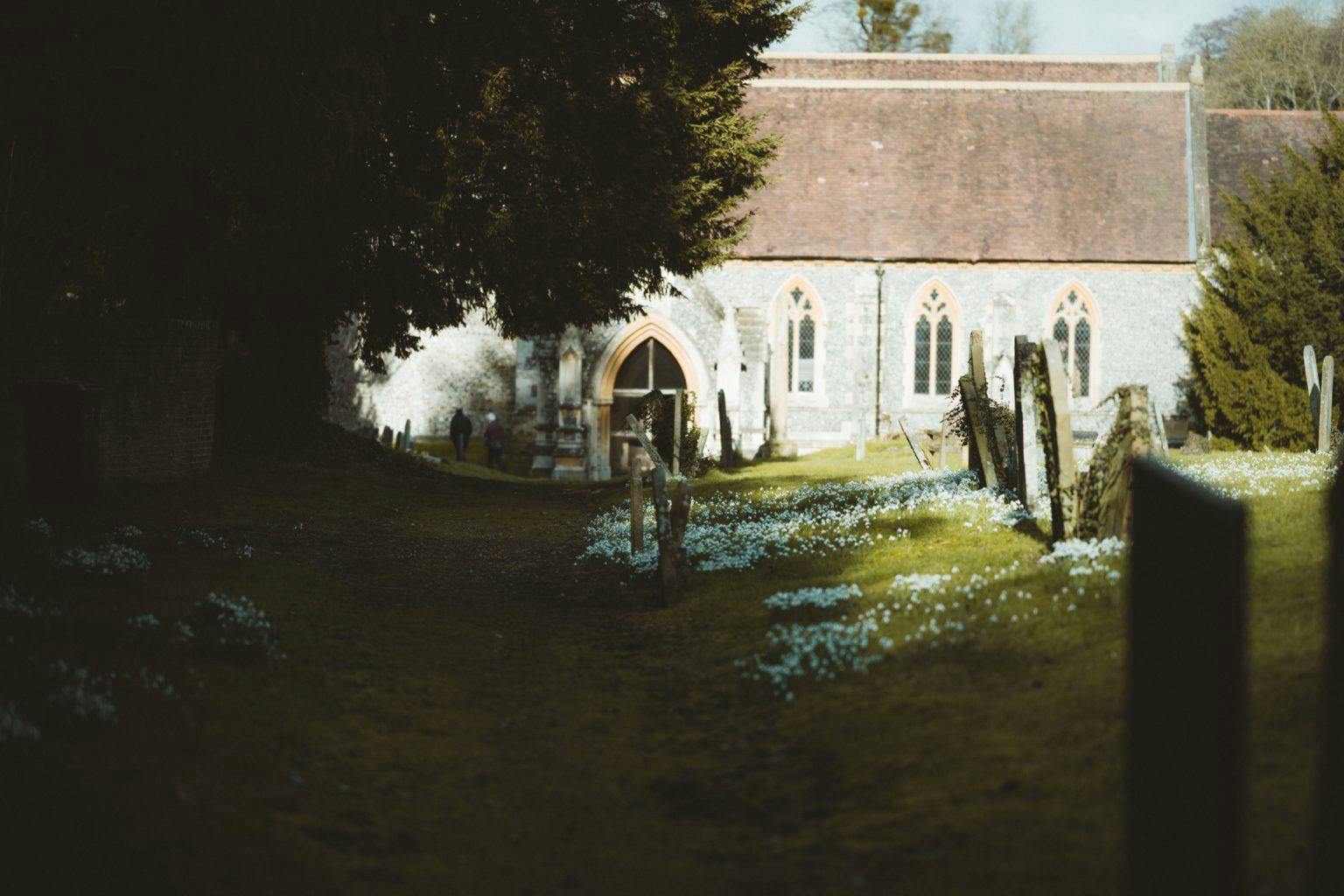Recovering Compassion with Center for Council’s Jared Seide

Jared Seide is the Executive Director of Center for Council. Center for Council administers programs which encourage compassion, repair communal ties, and teach presence, speaking truth, finding resonance without judgment, and listening.
Council is an ancient, cross-cultural practice which gathers people in a circle to witness each other’s stories and human experiences. Rooted in authentic speaking and listening, the practice, as Center for Council reveals, “fosters recognition of a shared humanity and interconnectedness [and] enables individuals to give voice to their stories, develop mutual respect, cultivate a compassionate response to anger, defensiveness, and violence, as well as strengthen emotional health and resilience.” Center for Council works with a diverse populations in diverse contexts. Council has been implemented in prisons, schools, hospitals, businesses, community centers, and non-profit organizations.
To experience this “compassion-based” practice for yourself, you may participate in one of their many public offerings. Currently, Center for Council is facilitating Social Connection Councils on upcoming Tuesdays, Thursdays, Saturdays, and Sundays.
In our hour and a half together, Jared and I discussed building compassionate communities, the importance of witnessing suffering, humanity’s interconnectedness, and making space for what is resonant to arise.
Where did you grow up and what was the landscape of your childhood like?
My New York underpinning, undergirding, colored a lot of my childhood and how I understood myself and what I was to do in the world. New York, in the ’70s and the ’80s, was a place of such intimacy and proximity. You couldn’t help but rub up against folks. The visceral experience of being pushed together forced a kind of intimacy with humanity, including enormous suffering, including joy and overwhelm and confusion. It affected me. It affected each of us. We had to make decisions about how much we were going to allow it all to penetrate. Some people run out of New York quickly; some people find a way to persevere.
Later on, I met Roshi Joan Halifax, who would talk about sitting in meditation in such a way that you practice with a strong back and a soft front. I realized that I learned early on what it meant to sustain oneself in the midst of a lot of stress, to allow oneself to be moved but not shut down, to attune your ears, eyes, nose, and heart to human suffering and to stay.
I think one of the tragedies of the culture we’re living in is, a lot of folks have the reverse response. They have a soft back and a hard front, closing themselves off to what they’re encountering. That may indeed be part of what drew me along in my search for a contemplative practice – a way to preserve my capacity for feeling into the experience of humanity, despite New York being so overwhelming.
I spent my childhood – from first through twelfth grade – going to the Walden School on the Upper West Side. It was an environment grounded in social justice and civil rights. A few years ahead of me, a student named Andrew Goodman, along with his friends James Chaney and Michael Schwerner, went down to Mississippi to register folks to vote. They were met with tragic, evil, horrible hate and were murdered. Their story became the Mississippi Burning story. A picture of Goodman, Chaney, and Schwerner were above the entranceway to Walden. The question Mary Oliver so poignantly asks, what will you do with this one wild and precious life, hung over us as we walked into school.
I grew up with a rather secular Jewish orientation that emphasized the meaning of coming from a culture that had been historically oppressed and persecuted. While I did not identify with a lot of the organized religion of that culture, there were some aspects which felt incredibly resonant. For example, the Passover Seder, in which you were asked not simply to tell the story, but to expand on the story, feel the story, and embody the story of oppression, in the place where one is squeezed; that this is a story which we should carry in our hearts all the time and to carry with us for those who are oppressed, those who have persevered through it, and those who will be experiencing that suffering in the future. This primed me for seeking out a real intimacy with the human condition and human suffering.
You performed as an actor and worked in theatre. What did these experiences teach you about stories and about sharing stories in public?
Stories present us with opportunities to go beyond our limited purview on the human experience and to enter into a story with someone. At eight years old, nine years old, the experience of telling a story as an actor on stage, having everyone pay attention and laugh, was exciting to me. It felt like I wasn’t alone. As a child actor, I realized something transformative was happening.
I pursued acting professionally for a while and then went to Brown University. During my college days, I realized there was something deeper within theatre. I went to London to work with teachers from the Royal Academy of Dramatic Art, where I studied classical theatre for some time.
I think my young mind figured that a career in theatre, and maybe in Hollywood, would give me the opportunity to live a life telling authentic stories. What I found was that Hollywood was the opposite of that for me. Coming to California, I found that authentic work made no money and was insupportable. Whereas, fake, reductive, superficial projects were lucrative. It was weird and confusing.
When I met this practice of council, I understood what I was seeking: to invite the true stories of our life and listen in such a way that we could be moved, and recognize the tears in our eyes and goosebumps we feel, and chuckling as a result of someone else telling a story. A reaffirmation of interconnectedness and interdependence.
What was your first experience with council like? How were you introduced to the practice?
Council comes from the Latin word concilium, meaning a gathering of people. In a sense, naming this thing “council” is effective in the moment, but more broadly, as human beings, we are drawn to connection. It’s in our DNA. It’s in our genealogy. It’s in the folks who came before. When we find ourselves together in a circle, there’s an indescribable sense of remembering.
Council, as we have come to name it, was codified in Ojai, California. It was something I had heard about happening in local independent schools in the area when my daughter was young. I was the president at the governing board at her public elementary school. In the aftermath of the Rodney King riots and unrest in Los Angeles, some schools became ugly places, rife with bullying and meanness. We experienced big problems with othering on campuses. I loved my daughter’s school, but I didn’t know what to do to improve the culture. We invited educators and folks working with council from nearby schools to show us what it was all about. The governing board and teachers began to study, train, and eventually practice together before ultimately bringing it to the kids.
Over the course of five or six months, I watched the community transform itself. I realized I was barking up the wrong tree, working in the entertainment industry. I followed the folks who had trained our little group back to Ojai and decided to learn. As I plunged into the practice, it resonated with me. My career, my life, my relationships shifted. And there was an enormous need that I felt I could serve both by learning how to practice, facilitate, and coordinate the emergence of this skillful means of easing suffering. Not just in schools, but in communities, in prisons, in healthcare and law enforcement, in the judicial system. There were many opportunities to introduce this practice all around us.
What resonates most with you in the practice of council?
Council gives us an opportunity to introduce a forum that invites us to navigate the liminality of everything that’s overwhelming in our busy lives and step in, creating a threshold, sacralizing the encounter, coming together and stepping into a place that we have decided will be intentional. Creating a circle and manifesting that with objects which are important and precious to us in the center of the circle, some people call it an altar. It may be unnecessary to go that far with it, especially in public schools and other public settings, but something needs to sit in the center of our experience, our common ground.
Creating a center with a things that hold meaning, whether it’s a stethoscope and a reflex hammer for doctors, or a walkie-talkie and a badge for cops, or some extraordinary things that some of the inmates have brought forward when we work in prison settings. The center is important because it holds the key to the stories that bring us back to life. That element of council felt very resonant to me.
And council establishes a really clear, intentional practice of speaking and listening from the heart. The opportunity to listen to each other in a way that we usually reserve for nature. When you go to the ocean and you hear the waves, you have an experience of the sound of the waves. It’s pure, you don’t have to agree or disagree with the waves to understand something about the surf.
You don’t have to have an opinion about whether they’re right or wrong. They just create the sound of the ocean. And if a storm comes in and the wind is blowing the leaves on a tree, it’s the same: a moment of curiosity and openheartedness in which we listen to the sound to understand the weather, not to have a stance on it. That kind of listening is something that we don’t often do with each other, but it felt really powerful to suggest that we could do that. And similarly, to speak in such a way that we’re actually just giving words to what’s aligned as opposed to the things that we think we’re supposed to say, or the story we’ve been taught to tell about ourselves, to reify this sense of my purpose, to introduce myself in a way that will impress you, or will forward my agenda with you or whatever.
What if we didn’t do that? What if we actually spoke from the heart based on what was really alive and arising?
If we could preference spontaneity and preference going to the essence rather than the gossip or the carefully curated expression, then speaking and listening could have the capacity for offering transformation. I could become the next version of myself. I could see you as something more than I thought you were based on your gender or your age or your economic status or your accent or your skin color. And I’ve recognized a human quality in you that we both share. You can’t un-ring a bell that has been rung. When someone says something, which has opened your heart, that stays with you, and you can leave that space and armor up for the world. But you carry that resonance with you.
How does council resonate with your experience practicing Zen?
In Zen, we understand that, in order to do things well, we need a practice. You don’t play a violin beautifully without ever practicing. You don’t hit a layup or a three-pointer without ever practicing. A practice enables us to condition ourselves, to breathe, to focus our attention, to be intentional about speaking and listening, to regulate ourselves. We don’t listen well and we don’t think well when we’re dysregulated.
But council doesn’t require you flash your Buddhist card. You don’t have to be a member of a club. In many ways, I think it’s better that council sit as a place where people can bring whatever tradition they have and practice in a way that enables them to come together. Spiritual leaders in all traditions have found such resonance. It is amazingly malleable, a practice which can be of service in diverse contexts. The world needs this practice. We need to create, in the words of John Paul Lederach, “relational spaces.”
In this series on community, we’re examining the strong connections between contemplation and action. What do you make of the relationship between inner and outer work?
I had the good fortune of being able to spend a little time with John Paul Lederach and I think he is such an inspirational, beautiful man, thinker, poet. He makes a point that we think that we need to have critical mass to make change happen, but it is, in fact, more a question of “critical yeast.” For anybody who’s ever worked with baking bread, it is the yeast that has the biggest impact. The yeast is not the large mass of people, but rather, the few who are activated and the relational spaces and interactions that are created. The initiated few can have an enormous impact on the mass around them.
It may seem overwhelming. It may seem like we’re living in a time when everything’s falling apart. Practices like council are so needed right now and can have such an impact when folks really drop in and allow themselves to be moved. In generative relational spaces, we create the potential for connection, for community, for cooperation. It’s so simple, and so familiar, to come together like this. It’s not showing up on our Facebook newsfeed, so we forget how easy it is and how natural it is to find a way back to compassion.
How are forms of storytelling and story-sharing essential to witnessing suffering?
I feel so blessed to have had the opportunity to be able to bear witness to extraordinary moments of suffering in the world through travel and work with Zen Peacemakers. Going to places like Auschwitz and Rwanda, and Bosnia Herzegovina, and Pine Ridge and Wounded Knee and practicing council with diverse groups. I have seen what humans have done to other humans, which has opened my heart to the fullness of the human experience and surprising, extraordinary resilience in even the darkest conditions. It seems so improbable, but it is also deeply inspiring.
When you learn about the journey of the prisoners at Auschwitz, whose belongings, then their hair, then their names, then their relationships were taken away… if you are a Nazi soldier and you can reduce them and reduce them and reduce them until they appear to be less than human… you may actually be able to lead them over to the gas chambers and the crematoria. Humans were able to do that by dehumanizing the people who had been led to that place on trains and separated at the selection platform. There was a calculated process, which began with denying them their rights and stories and progressed to the place where they were considered unworthy of being treated as humans.
The way that process was imported in Rwanda is terrifying. European soldiers were said to have brought there some of the tactics and strategy that the Third Reich had used to promote “the final solution,” which may have helped facilitate the genocide against the Tutsis. There are people around who bear the scars of the Holocaust, but that experience feels like it’s almost slipping into the time of the dinosaurs because it’s so far away, but we keep repeating this dehumanization and othering all over the world. And some of the language that emerges around how we as Americans are to think of people who “don’t look like us” is frighteningly reminiscent.
The process of dehumanization begins with norming the silencing of voices. The antidote to that is raising up the story, hearing the silenced voices, is seeing where folks are becoming invisible and doing whatever we can to prevent that through the reclaiming of the stories and the honoring of the voices.
Practices like council give us opportunities to hear voices and celebrate stories again. Every experience of sitting with someone finding yourself, unexpectedly moved by what comes out of their mouth is a shock to the system. It’s the kryptonite to othering, the thing that breaks the spell, the moment where you recognize, “Gosh, you had that experience. Wait a minute, really?”
This affects us on a visceral level and counteracts that tendency to dehumanize. It helps us retain the capacity to listen. When another human being says the words, “I can’t breathe.” That should strike us as our child, or our brother, or ourselves. We have to hear those words as though someone we love is saying them. If we do not hear the words with an open heart, as if they are an expression of humanity, we’re in some trouble.
How do we get back to compassion? It’s the right question. There are ways we can address this. There are ways we can step back, become more reflective, and develop capacity to work with the experience of being human. We need practices and spaces that invite this relationality and promote deeper listening.
You’ve spoken elsewhere about the importance of not turning people into problems that need to be “fixed.” How central is this to the practice of council, and how does the practice of council distinguish itself, in this way, from other forms of intervention?
I love that question. I’ve had a lot of experiences in which folks have an expectation that I’m coming in with all the answers. Council is predicated on the practice of not knowing. I don’t know, but I’m willing to sit with you and practice in such a way that we can find our way together to what is resonant. I have no more authority than you do in determining what needs to be spoken of; I just have a practice that I’d like to share with you, so that it can become our practice that we hold together.
In many prison settings, where council exists alongside other interventions, there is often a moment where folks ask, “So is there a right answer? Is there a right way to do this?” But council isn’t the place where anyone’s trying to fix anybody. It’s a place where we’re able to find our authentic voice and recognize that in this practice of offering regard, of self-regulating and showing up to listen, we find our way forward into the next chapter together. In council, we invite others to find their authentic narratives and to see the resonance in our collective narrative. There is an arising of collective wisdom and the potential for transformation of the individual. It happens simultaneously, which is extraordinary.
The more I can experience other people finding their way to council, the more I fall in love and find new contours and nuances in the practice. I’m often amazed at the different ways a center can look and the diversity of methods for creating something sacred.
The greatest way to understand and learn about council is to practice. And so, everybody is invited to log onto one of these Social Connection Councils that are up on our website, and I’m amazed to see how valuable they seem to be, how they seem to meet the moment. Folks find their way and are fed by what they need. It’s like a potluck where everybody has got their own little dish that they’re bringing, and there’s enough for everyone to be fed in the way they need to be fed.
Is there a particularly transformative experience in council you would like to share?
The experiences in prison have been quite extraordinary. They often result in real transformation. I can’t tell you how many folks have arrived in the Los Angeles area having been given a grant of parole unexpectedly, lifers who went to the Board of Parole Hearings and spoke of their insight, modeled a sense of compassion and understanding and listening and authenticity, that led the Board to say, “You don’t belong here anymore. You belong out in the community where you can be a resource to youngsters who really need an elder like you.” Hearing that is truly rewarding.
I have experienced folks in prison sitting in council who come to the practice extremely uncomfortable to be sitting with someone who would be on the other side of a riot earlier that morning, and perhaps the next day, because of their gang affiliation or their ethnicity. They are folks who are sworn enemies on prison sites that are actively violent, contexts in which if you do not partake of the violence, your own folks will come after you because it’s a betrayal.
It’s an extraordinarily dangerous situation for rivals to arrive in a space and not only agree not to stab each other, but also, to make themselves vulnerable such that the storytelling of the other really moves them. There will come a point, we all know, where council will end, and they’ll have to walk back out in the yard and “armor up” again. But, as I mentioned earlier, it’s a bell you can’t un-ring. When a person with whom you have just cried or laughed or shared a moment of tenderness shows up in front of you with an implement of violence, you have to turn away. He’s become your brother. It changes the dynamic drastically.
When Pelican Bay State Prison transitioned from being a supermax maximum security, solitary confinement-oriented prison to a prison where folks could interact with each other on the yards, the orientation shifted and folks came out of “ad seg,” administrative segregation, which is essentially solitary confinement. Some people were able to interact and have conversations with others, after being isolated for 20, sometimes 30, years of being isolated.
After the first day, folks would come in and say, “Going to sleep last night, I felt odd feelings in my face, like I was getting a toothache or something. Then I realized, I’d been smiling. I hadn’t smiled so much since I was a kid. I didn’t realize the muscles in my face could still do that.”
They told stories of what it meant to be in isolation. Some men spoke of losing their parents and grieving by themselves for months, sometimes years, without the ability to talk with anyone.
I was hearing these stories a few months before my own father would die. And I have to say that I was able to be present for his period of active dying and then his death in a deeper way. I was constantly reminded of these uncles and mentors and elders who had told me stories about how much they missed and what they had wanted to do. It felt like encouragement to say some things to my dad I might not have. It helped me through my grieving process.
I felt as though I entered a really challenging time in my life supported by folks who had prepared me for a moment, not because they were friends I’d hung out with, but because I’d spent enough time in council with them. I carried the human experience of a man losing his father and longing to be present and to say, “I love you,” and to be able to hold hands. I might have missed those moment had my Pelican Bay teachers not reminded me of how important it was to pay attention.
As community leader and healer, what gives you hope?
Hope is a complicated word. I am so inspired by the resilience and the innate human goodness that resides in everyone and so grateful to have been reminded again and again and again of everyone’s capacity to access that goodness.
We must understand that the lives of our grandchildren, as John Paul Lederach says, are going to be deeply connected to the grandchildren of our adversaries and enemies. We must move towards reconciliation, if only to see something emerge generations from now that will be more beneficial, more peaceful, more loving. We all have the capacity to access that innate human goodness. There are practices which help us find our way back to that, where not only can we understand where our humanity is evolving and is transforming, but also to understand those folks who seem incomprehensible to us.
The worst thing we could do is to stop listening. The worst thing we could do is to close our hearts and to harden ourselves to the experience of others, which is a hard thing to say when there’s so much horror. And we also need to do all we can to hold folks accountable, to find folks who have transgressed, and to impose appropriate consequences and punishment. I’m not suggesting that we do anything less than what is appropriate. But at the same time, as human beings, we all have the capacity to love and to care, to nourish ourselves, to connect with each other. Just offering our regard can be a great act of generosity. The extent to which we deprive ourselves of the ability to find our way back to each other, to find our way back to the interconnectedness that is the condition of humanity, I think we will constantly struggle.
It is now more important than ever for us to remember these practices and remember what we need to feed ourselves. We all have the capacity to heal, to find ways back to each other, to offer regard and authenticity and create conditions in which compassion can emerge. When our sister organizations have worked in places like Northern Ireland and the Middle East, you don’t begin a conversation in council by asking: what do you think about the border wall and the policies? You begin by talking about a best friend or a crazy grandpa or a time you had a crush on somebody or saw a beautiful sunset. When you realize that you are sitting in council with other humans who have had resonant human experiences, you realize everyone wants to love and care, to live in peace, to enjoy our families, to have meaningful lives and work. Practices like council enable us to find our way back to that common humanity.
This interview has been edited for length and clarity. Photo of Jared, courtesy of Center for Council.
*
Donate to the Center for Council.
Participate in an upcoming Social Connection Council.
Learn more about public offerings and workshops.
Sarah James is the editor-in-chief and founder of Clerestory Magazine.
Discover more from Sarah James.
